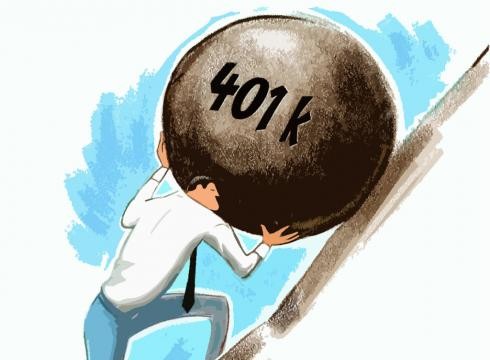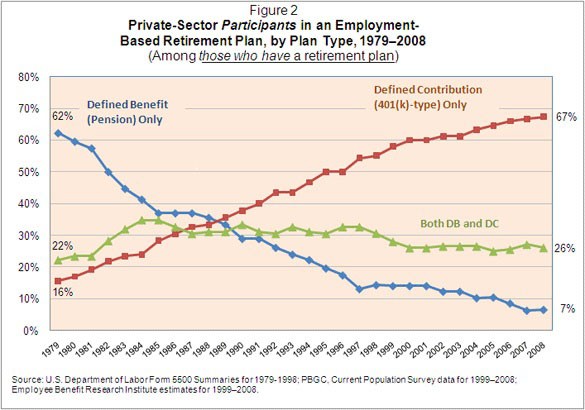How To Get The Most Out Of A 401(k) Program
Post on: 4 Июнь, 2015 No Comment

Workers are increasingly on their own when it comes to providing for their retirement. Pensions are all but unheard of outside of the government or heavily-unionized industries, and both employers and the government have increasingly transferred more and more responsibility to the individual worker. When it comes to employer-sponsored plans like 401(k) s, it is vital for workers, savers and investors (and you should see yourself as all three) to make the most they can out of the plans. While there are some differences with other plans like 403(b) s, most of this advice applies fairly well across the major plans in the United States. (For more, check out Common Questions About Retirement Plans .)
Work Backwards
For folks who have the ambition and the financial wherewithal to truly make the most of their 401(k), one of the best ways to begin is by working backwards. Take your maximum allowable contribution (your 401(k) plan documents should make this number relatively clear, or you can ask for help), divide it by the number of pay periods in a year and see where that leaves you.
Can you afford to save this amount? If so, there is not much more that you need to do apart from making the best investment decisions you can within the plan options. If you cannot afford this amount, whittle it down until you can – clearly, expenses like mortgage or rent payments, utilities and food need to be covered, and it makes little sense to put aside so much that you need to borrow money through credit cards to make it through a month.
Even if you cannot make the maximum contribution, consider supplementing this with any bonuses or profit sharing payments you receive. Many companies will allow you to have these amounts deposited directly into your 401(k), and this is a good idea whenever possible – many good intentions have gone awry once a bonus check is in hand or in the checking account. (For other things you can do to your 401(k), see The Best 401(k) Moves Right Now .)
Above all, try to be consistent. Set a specific per-paycheck amount and do not change it unless you really have to. Likewise, do not try to time the market or curtail contributions just because the economic or political news seems depressing for a while.
If you can, try to save a minimum of 15% of your gross pay. This amount, coupled with reasonable investment returns on those savings, should be sufficient to not only supplement Social Security down the line (in whatever form that remains), but also fund a pretty secure retirement.
Make the Match
Fully exploiting employer matching is one of the most vital strategies in getting the most out of a 401(k) plan. Matching is pretty much exactly what it sounds like – subject to certain rules and limits, your employer will contribute the same amount of money you contribute, effectively doubling your retirement savings without decreasing your salary or increasing your tax burden. Many employer matches kick in at 3% of your pay (or higher), so try as hard as you can to at least contribute this much.
Want another reason to max out your employer match? In many cases, employers calculate their costs and base their salaries on the basis of full matching; if you don’t take advantage of this, you’re basically handing back free money that you’re not going to get back in the form of salary or bonuses.
Some employers will elect to match your contributions in company stock. While this is not always as desirable as straight cash, it shouldn’t dissuade you from maximizing your match. In many cases, that stock can be sold and converted to cash within a fairly short period of time and at a reasonable cost. (If your company has stopped their matching programs, for alternatives read When Your Employer Cuts Your 401(k) Match .)
Watch the Costs
As part of some employee retirement plans, workers can avail themselves of investment advice from independent professionals. Unfortunately, this advice is rarely free and you may find that you pay 1 to 2% of your funds to get this help.
It’s understandable that many workers feel overwhelmed when it comes to calculating their contributions, and then investing that money. Even still, paying for investment advice is a dicey proposition, particularly when it involves a 401(k) plan and investors are given a relatively fixed menu of investment options.
Savers also need to pay careful attention to the costs of the investments they buy within their 401(k). While mutual fund expenses have come down in general over the years, and many fund families offer no-load funds for 401(k) plans, it’s still important to pay attention.
Along similar lines, investors need to be careful with annuities and target date funds. Annuities arguably do not have much of a place in tax-sheltered accounts to begin with (a topic for another day), but their often high expense ratios can eat away at their value over time. Likewise, while target date funds are popular options in many plans, these funds often charge higher fees than normal funds without correspondingly better results. (To help you decide which assets are right for your portfolio, read Pick 401(k) Assets Like A Pro .)

Consider Borrowing
For workers who save some funds in a 401(k) but find that they cannot contribute more, because they are saddled with expensive debt, there may be a counter-intuitive option. Most plans have provisions that allow employees to borrow funds from their own account. This money comes relatively free of strings (insofar as what the funds can be used for), and it is possible to use it to repay much more expensive debt, like credit card debt. This money does not come free, but the good news is that the interest charged is basically being paid to you.
This is clearly not a risk-free maneuver. That money has to be repaid on time, or the borrower will incur penalties. Moreover, some workers will find that borrowing from their retirement savings is just a little too convenient and opens a Pandora’s Box of future trouble. Nevertheless, this can be an effective means of interest arbitrage that can free up more money to be saved down the line. It is not a step for everyone, but borrowing low-cost money from a 401(k) in order to repay high-cost credit card debt and ultimately invest even more in the 401(k), can be a prudent step for many. (For more on borrowing, check out Sometimes It Pays To Borrow From Your 401(k) .)
Consider Other Options
What do you do if you have maxed out your 401(k) or you really hate the investment options offered? In most cases, it is allowable to have an IRA and 401(k) and contribute to both in the same year. The IRA contributions will most likely not be deductible. but the money put aside this way can still accumulate tax-free over decades.
Once you have contributed as much as possible to these tax-sheltered accounts, there are still other ways to save for retirement. People who are lucky to have maxed out their 401(k) or IRAs in a year can consider buying and investing in annuities. There are a lot of problems with annuities – they can carry high sales loads, they typically have high expenses and sponsors have continually transferred more risk to the investor. All of that said, money in an annuity can accumulate without year-to-year taxation, and it is a worthwhile option if protecting even more retirement savings from the taxman is important.
Last, and by no means least, complaining about a deficient plan can be an effective means of improving your options (and those of your co-workers). If you do not like how a plan is organized or the investment options on offer, say so. Keep in mind that many employers choose 401(k) plans on the basis of what is cheapest and most convenient to offer, and they may not even be aware of its deficiencies. While it is true that many workers do not like to be a squeaky wheel, and some companies are certainly apt to be more responsive than others, doing nothing is a pretty good way to ensure that the plan will get no better.
The Bottom Line














